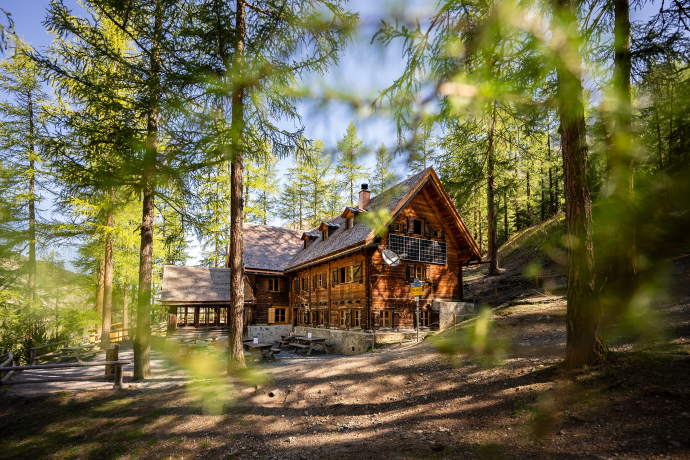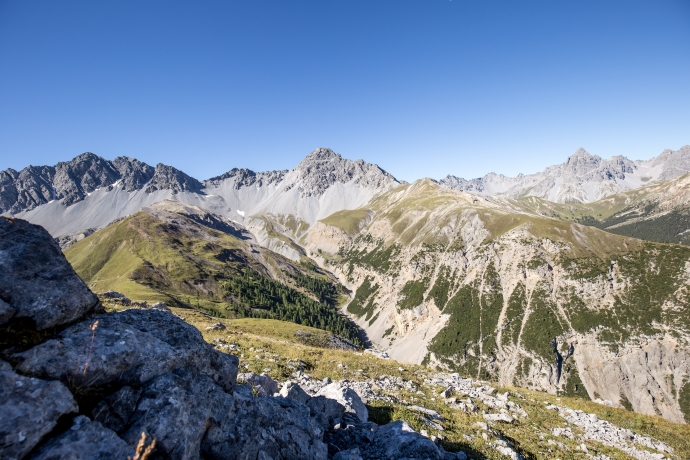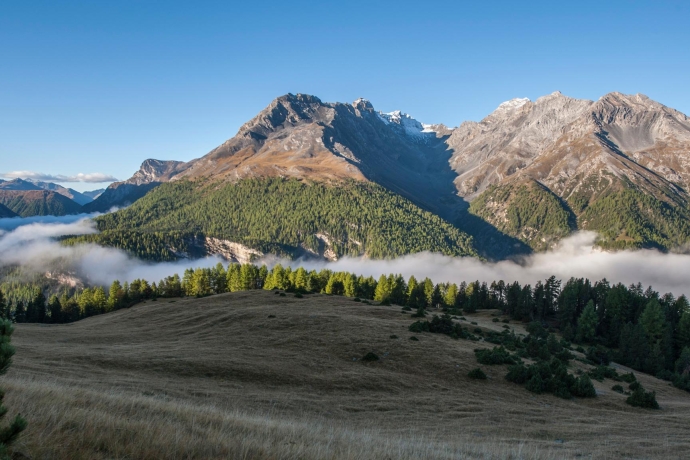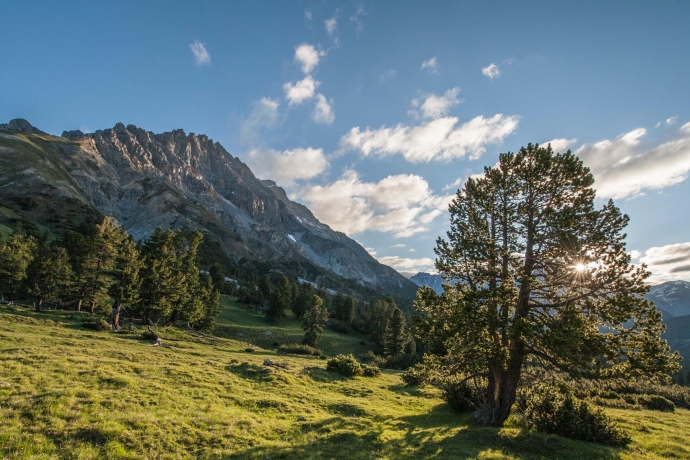Unchanged and original.
Swiss National Park


Experience report.
King's Tour to the Macun Lakes
Golden larch splendour, crystal-clear mountain lakes in the middle of a barren high plateau, bearded vultures circling above and a fresh autumn wind in your face: the hike to the Macun lake plateau is THE recommendation for hiking enthusiasts who love sporty tours in remote areas.
Impressive.
The mighty spectacle of nature in the Swiss National Park.
The Swiss National Park is a symbol of the region's unique diversity and an attraction for nature lovers and hikers alike. The largest wilderness area in Switzerland covers 170 square kilometres unspoilt natural landscape and 100 kilometres of marked hiking trails. Founded in 1914, the National Park is not only the only one in Switzerland, but also the oldest in the Alps and Central Europe. This unique natural oasis is characterised by its unique high alpine flora and fauna: Deer, marmots, bearded vultures and the national park's heraldic animal, the pine jay, reside here all year round, while the rich flora really blossoms, especially in July and August. The National Park also includes the "Macun" high plateau at 2600 m above sea level above Lavin with its more than 20 mountain lakes – it is particularly rich in ibex and chamois. Together with Val Müstair and parts of the Lower Engadine municipality of Scuol, the Swiss National Park was also officially recognised as a UNESCO Biosphere Reserve Engiadina Val Müstair on 13 June 2017.
Swiss National Park.
Protective provisions
- it is strictly forbidden to leave the marked paths as well as the resting areas marked with posts
- no littering
- no natural object may be picked or removed: animals, plants, sticks, stones, etc.
- Visiting the National Park is only permitted during the day. Daytime is defined as the time from the beginning of the so-called civil twilight in the morning until the end of the civil twilight in the evening. The same applies to overnight stays in vehicles alongside the Pass dal Fuorn (Ofenpass) road.
- Dogs are not allowed in the Park, not even on a lead.
- Bathing in lakes, pools, streams and rivers is not permitted.
- no camp fires
- No cycling or flying of any kind (e.g. drones) are permitted (see see Civil Office of Aviation website).
- Nature must be left undisturbed.
- The National Park is closed in winter, entry is forbidden (Designated wildlife area).

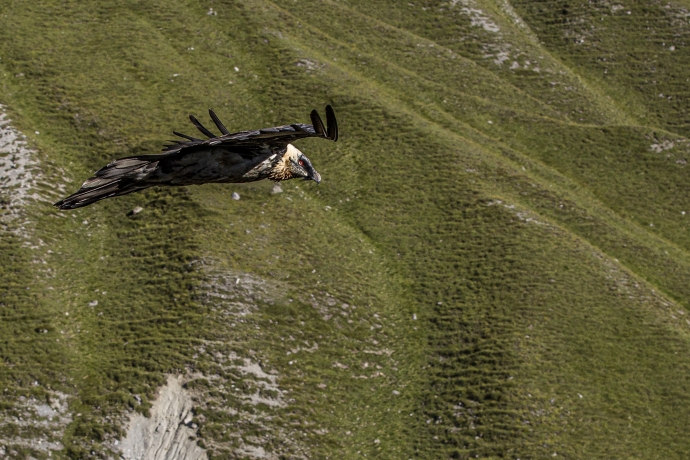

Show all 10 images



